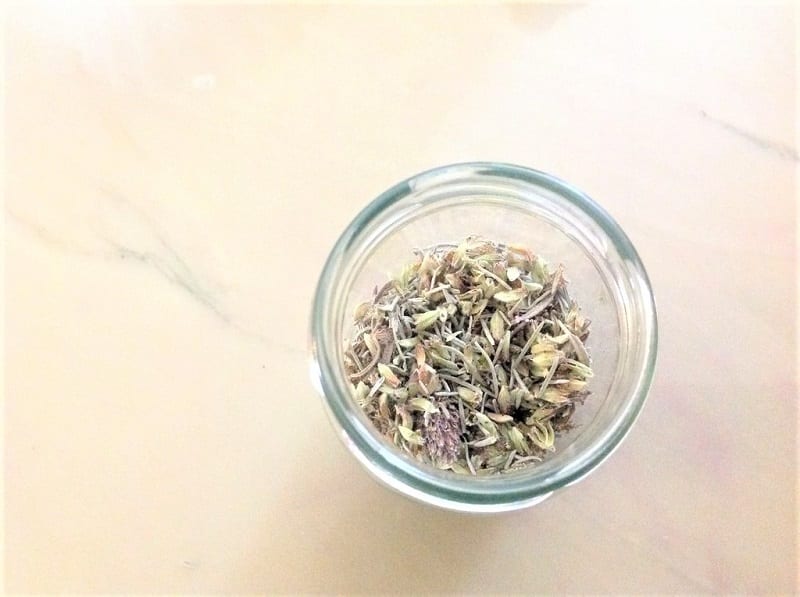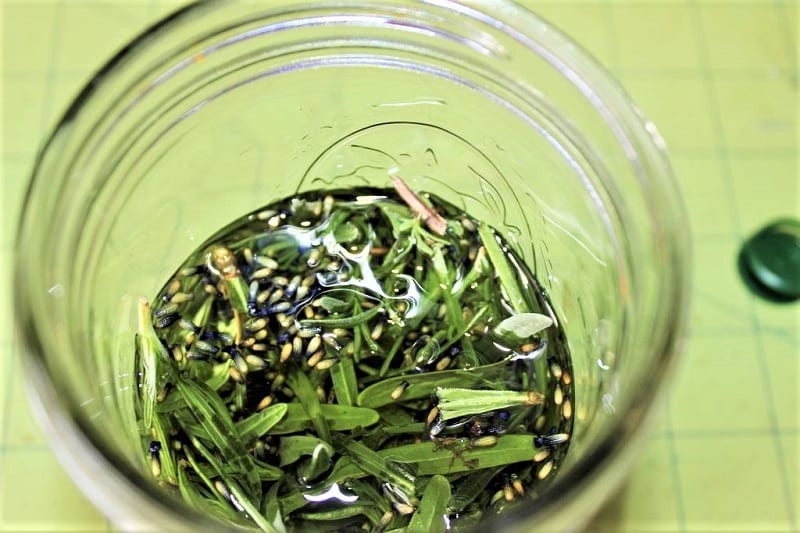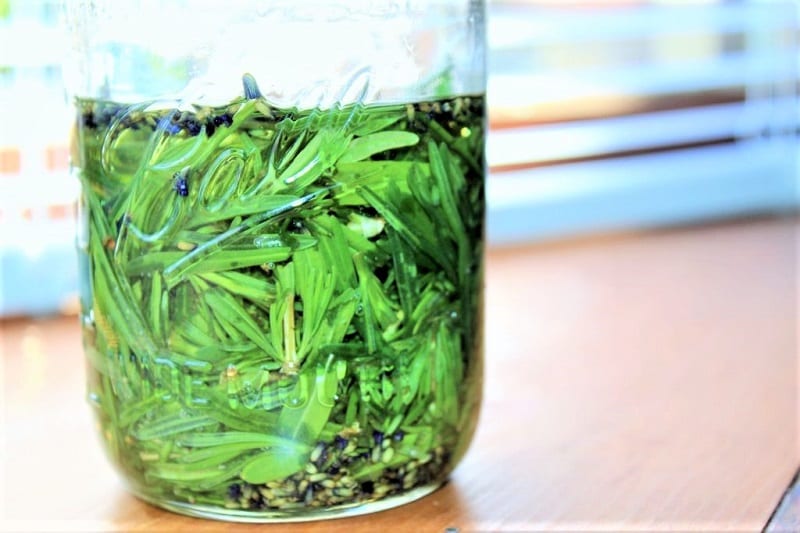Last Updated on July 17, 2024 by Team Ideas24
Lavender oil can be used in both the kitchen and the bathroom. As a tea, lavender oil can have a calming effect on your mind as it is beneficial in reducing stress, anxiety, and depression.
Sixteenth-century glovemakers who perfumed their ware with it were said to have been spared from cholera. Seventh-century grave robbers who washed with their essence miraculously escaped the Justinian plague.

The name is derived from the Latin verb lavare – which means “to wash.” Both its pinnate, silvery-green leaves and its gorgeous purple-blue flowers issue a fragrance that’s crisp, sparkling, floral, and sweet.

Indeed, these days, every other household, grooming, or wellness product is infused with lavender’s antiseptic-clean aroma.
Making Your Own Lavender Oil
Beyond its fragrance, however, there are still those who stand by the lavender’s curative properties. People who regularly use lavender oil or balm say the potions promote relaxation and soothe everything from muscle aches to anxiety and menstrual cramps.
Here is how to make your own lavender oil.
1. Harvest and prepare lavender.
Harvest a few lavenders from your garden. Do this by cutting through the base of their stalks with a pair of scissors. You will need a few 6-inch segments of fresh stems along with their buds and flowers. Avoid the woody, thick stems at the base.
Bundle the stems with rubber bands or string and hang them in a warm, dry place, flower heads pointing down. Allow two weeks for the stalks to dry completely.
2. Crumble and break apart the dried lavender.
Once the lavender stalks are dry, crumble them apart with your fingers. Be sure to wash your hands before doing this. If you are using buds, pry them and open them with a knife or your clean fingers. Then, gather the crumbled pieces in a clean jar.

3. Pour oil over the dried lavender.
Pour any non-scented or lightly scented oil into the jar, fully covering the crumbled lavender. Permit one to two inches of space at the top for expansion. Some use almond oil, olive oil, or safflower oil for this purpose. Be mindful that strong-smelling oils could overpower the scent of lavender.

4. Steep the mixture under sunlight or over a steady heat source.
Cover the jar tightly and allow the mixture to steep, setting the jar in a sunny location. Most experts recommend that you allow the brew to sit under sunlight for three to six weeks. However, if time is limited, you can heat the oil and lavender mixture atop a double boiler or crockpot for two to five hours.

Use a cooking thermometer and a stable heat source for this second method of steeping. The oil should maintain a temperature between 38ºC to 49ºC throughout. Too much heat will affect both the aroma and the shelf-life of the potion. Allow the brew to cool before moving on to the next step.

5. Strain the oil.
Use a sterilized wire sifter sieve to strain the oil over a jar. Or, you can lay a piece of muslin or cheesecloth over a bowl and pour the oil and herb mix over through it. Once you are done, discard the flowers and other lavender pieces. If you want, you can gather the muslin and squeeze any remaining oil into the jar to extract as much lavender essence as possible.

6. Repeat the process.
You can repeat the entire process for a more potent mixture. Simply pour the lavender-infused oil into a jar filled with a new batch of dried lavender. Steep the mixture under sunlight or atop a double boiler to create a stronger infusion. You can repeat this procedure using the same oil as many as eight times.

7. Add Vitamin E.
To increase the shelf-life of your lavender oil, you can add Vitamin E to the infusion. This step is recommended if you do not have a cool, dark place to store the potion. Vitamin E is an antioxidant and will help prolong the oil’s shelf-life, albeit only to a limited extent. Stir in a few drops of vitamin E oil, or cut open a vitamin E gel capsule, and pour the contents into the oil.

8. Transfer and store your homemade lavender oil.
Transfer your lavender oil to a bottle or jar made of dark glass or opaque plastic to prevent over-exposure to light. Too much light will break down the aroma of the infusion. The shelf-life of lavender-infused oil depends on the type and freshness of the oil you used. But the oil will typically last for months if stored in a dry, dark location.

Are you ready to make your own lavender oil?
We would like to thank Jennprice33 and Sheldy123 of instructables.com for the photographs that appear in this article.
Therapeutic Benefits and Scientific Support
Lavender oil, which comes from the purple-blue blooms of the Lavandula angustifolia plant, has been celebrated for generations for its unique scent and health advantages. This part explores the scientific data bolstering its therapeutic qualities.
Anxiety and Stress Reduction
Lavender’s soothing aroma has been investigated closely for its capacity to reduce tension and anxiety. Many studies have shown its success in various settings, from dental offices to critical care units.
One study published in the Journal of Alternative and Complementary Medicine found, for example, that patients who smelled lavender before surgery reported much-reduced anxiety levels than those not exposed to the perfume. Linalool, a component of lavender oil, is credited with this effect; it may interact with the brain to set off a relaxing response.
Another study on stress management also found that daily lavender aromatherapy greatly lowered stress levels in nursing students during their tests. Using lavender-scented hand wipes or inhalers offered a fast and efficient way to reduce acute stress, highlighting the oil’s usefulness as a useful tool for high-stress events.
Sleep Enhancement
Lavender oil is popular among individuals with sleep problems. It helps improve sleep quality and is clinically supported as a natural cure to increase general rest quality, lengthen sleep duration, and boost sleep efficiency.
Regular lavender oil use at bedtime helped participants reach a deeper sleep state more rapidly and improved sleep patterns in controlled research, including persons with insomnia.
Besides, the oil helps to create a suitable sleeping environment. It has been applied in several ways, including pillow sprays or diffusers, to encourage tranquility and a quiet sleeping environment. Elderly people or those in hospital environments should benefit from this since it has been demonstrated to lower night-time agitation and sleep problems.
Pain Relief and Anti-inflammatory Properties
With its analgesic and anti-inflammatory qualities, lavender oil is becoming a more natural substitute for traditional painkillers. Extensive clinical studies validate its efficiency in controlling several forms of pain.
Studies have shown that massaging the oil into the skin can greatly ease osteoarthritis-related pain and discomfort. Its main ingredients, linalool and linalyl acetate, are supposed to lower inflammation and change pain signals.
For those with migraines, lavender oil has also proved helpful. Patients who inhaled lavender during a migraine attack reported faster relief than those who did not, according research written in European Neurology. This implies that lavender oil could be a strong complement treatment for lowering the frequency and intensity of migraine symptoms, so offering a non-invasive way to control this incapacitating disorder.
Skin Health
Lavender oil also has therapeutic effects on skin care, where its antibacterial and anti-inflammatory qualities are important. It has been used well to treat psoriasis, acne, and eczema, among other skin disorders.
The oil helps to lower redness, calm irritated skin, and hasten the healing of small cuts and burns. This is explained by its capacity to control skin’s sebum output and fight bacteria, thereby preventing and healing of acne breakouts.
Lavender oil is also used to treat minor burns and wounds. Its anti-inflammatory and analgesic qualities help calm the afflicted area; its antibacterial effect stops infection and accelerates recovery. Clinical studies have also shown how well it helps improve the cosmetic appearance of healed skin and lessen scarring.
By harnessing the power of this natural remedy, individuals can explore a holistic approach to health and wellness that has both historical backing and modern scientific support.
Conclusion
Making your own lavender oil at home allows you to take advantage of this adaptable plant naturally. Making an oil that supports skin health, pain alleviation, and relaxation requires just a few basic ingredients. Proper storage of your handmade lavender oil can help it to remain aromatic and medicinal for months.




















